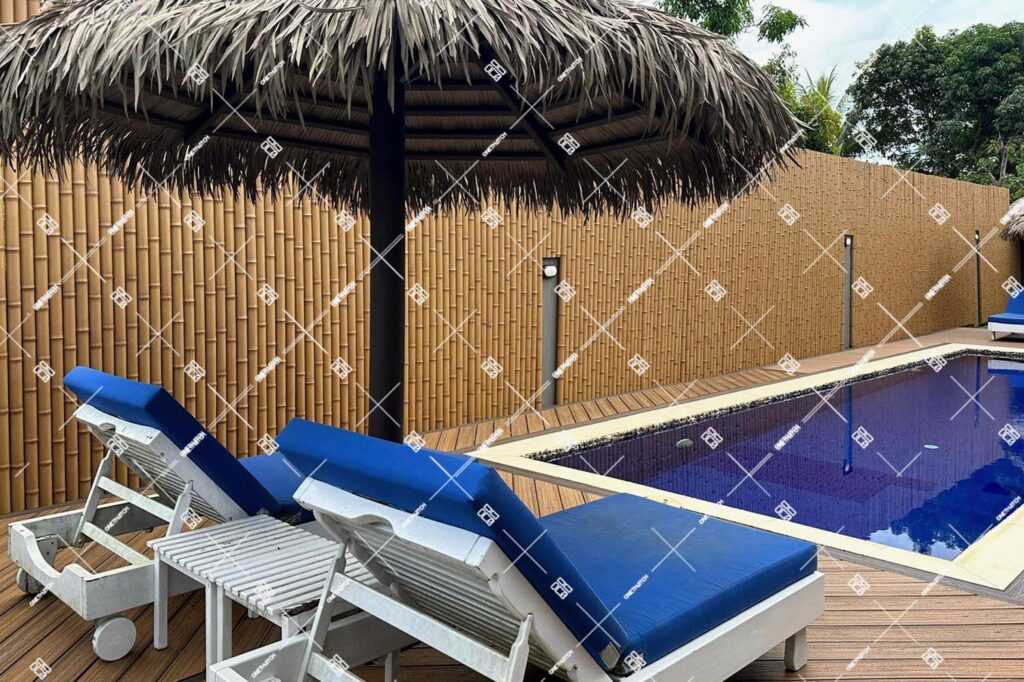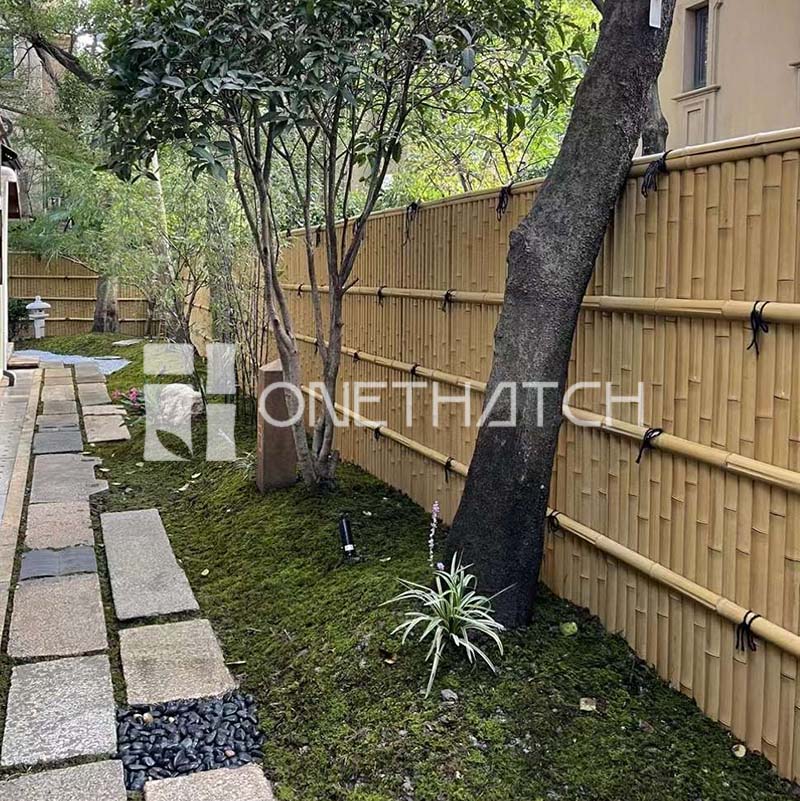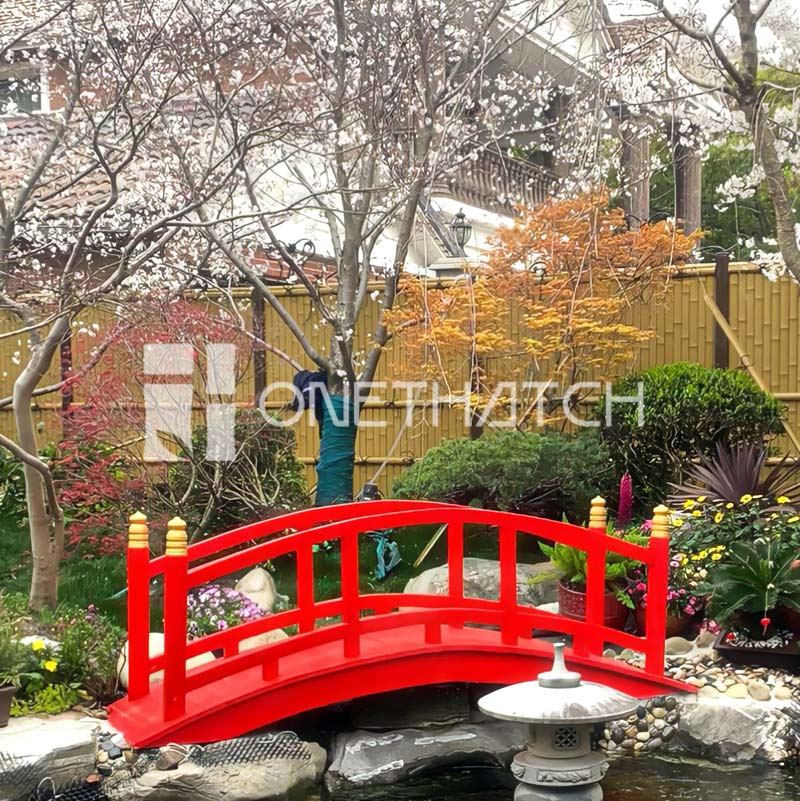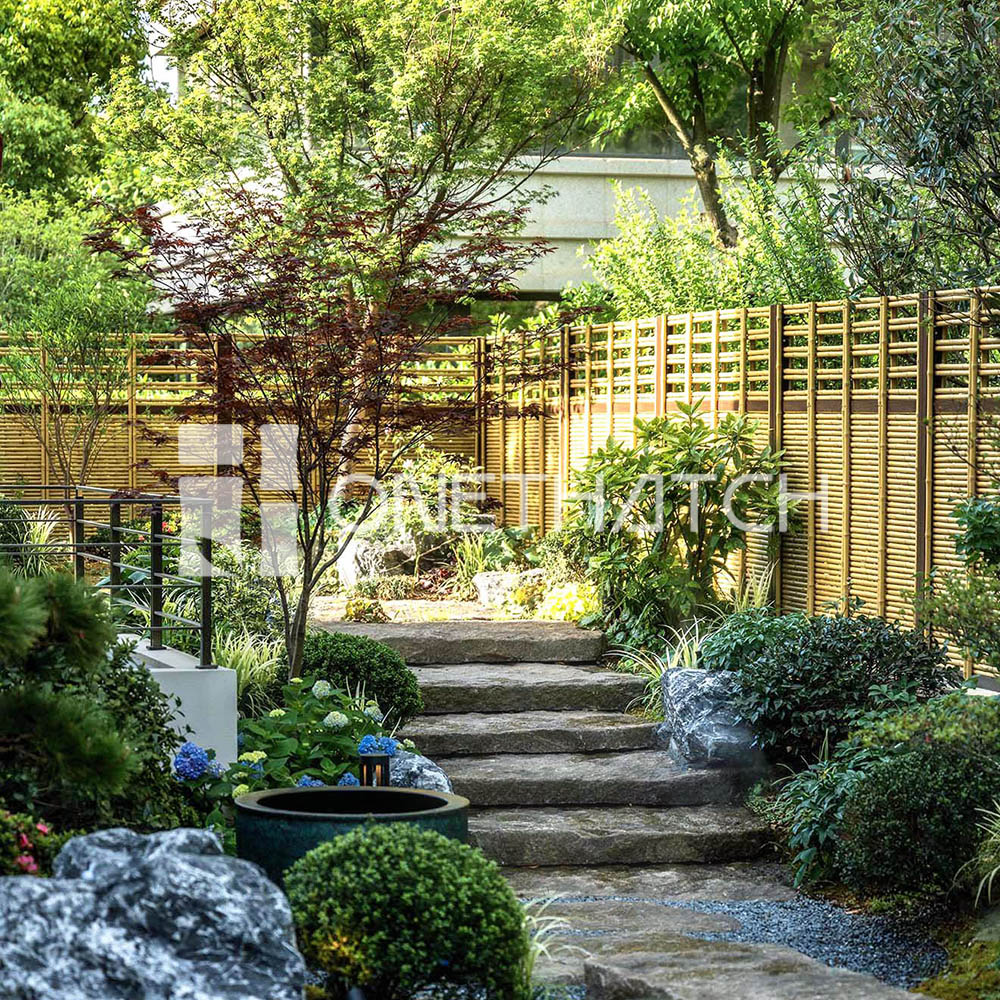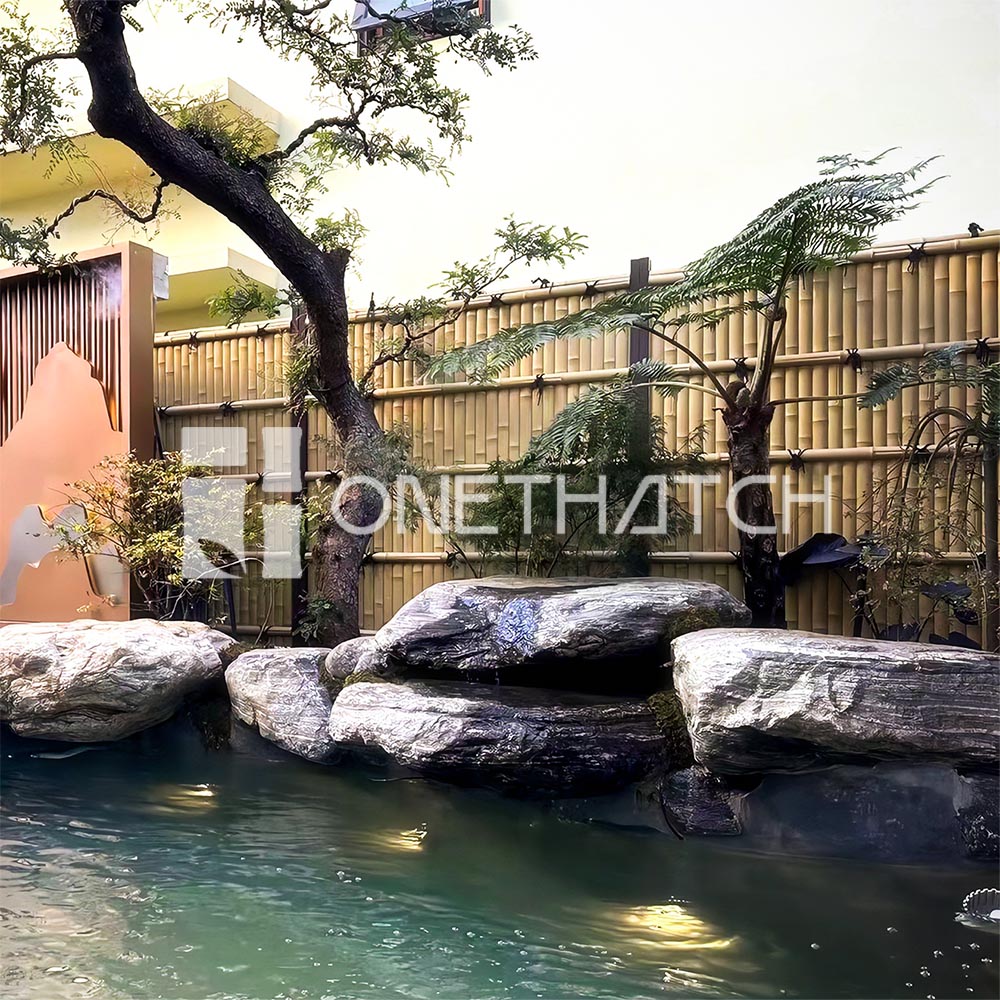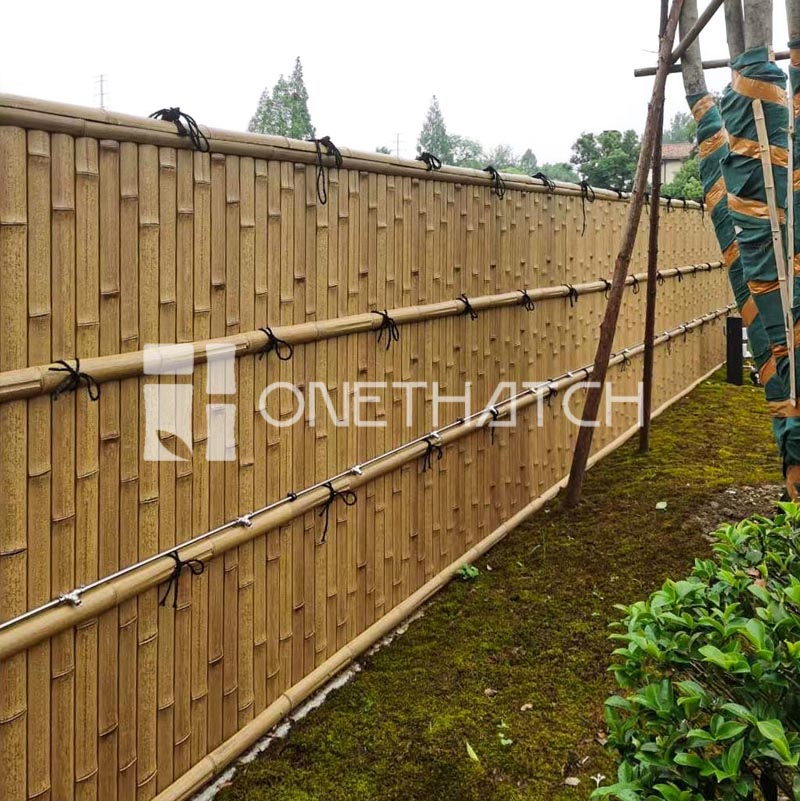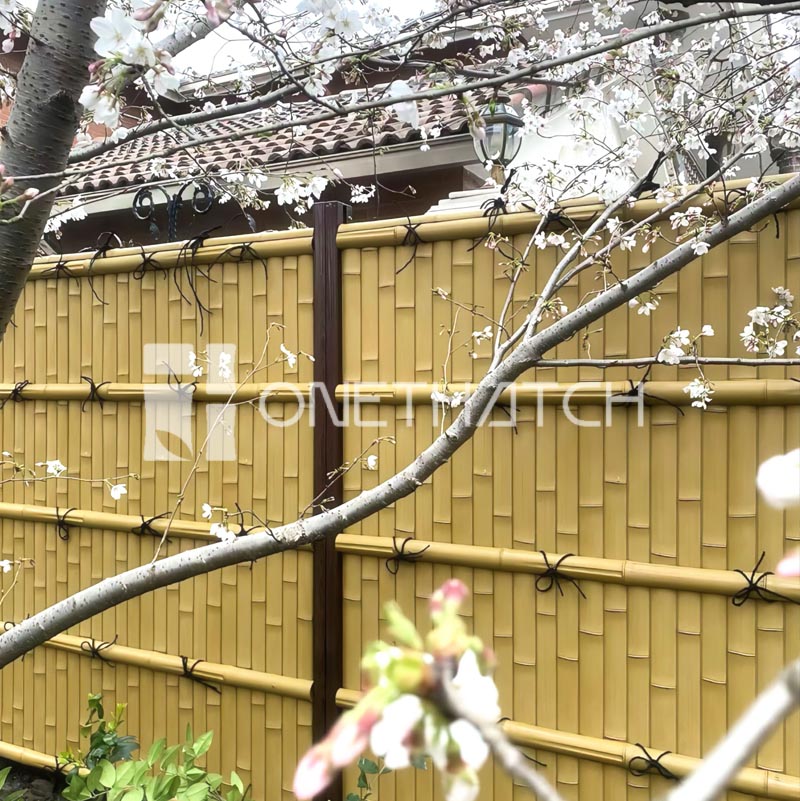什么是合成竹?
仿真合成竹 is an architectural-grade material designed to replicate the warm, natural look of real bamboo while outperforming it under outdoor exposure.
Unlike natural bamboo that can split, fade, or mold, this material is made from 100% ASA (Acrylonitrile Styrene Acrylate) — a rigid, high-weatherability polymer commonly used in automotive trims and outdoor construction panels.
Because ASA is UV-stable throughout its entire cross-section, not just on the surface, the color and integrity remain unchanged for decades — even when exposed to constant tropical sunlight, salt mist, or humidity.
Why Weatherability Matters for Coastal Architecture
Coastal and tropical bamboo projects face some of the toughest environmental challenges:
-
Intense UV radiation breaks down natural fibres and pigments.
-
High humidity and salt air accelerate corrosion and biological growth.
-
Thermal cycling causes expansion, contraction, and cracking.
ASA synthetic bamboo solves these issues through its intrinsic polymer stability:
-
UV protection built into the material, not coated on top.
-
No warping, softening, or chalking, even under 80 °C rooftop temperatures.
-
Zero water absorption, preventing mold and delamination.
This combination makes ASA bamboo pole and panels ideal for resorts, seaside villas, pergolas, and poolside bars — anywhere that beauty and endurance must coexist.
How ASA Synthetic Bamboo Resists UV and Weathering
ASA’s chemical structure contains acrylate groups that naturally block UV radiation and maintain color brilliance.
The entire bamboo profile — inside and out — is ASA, not HDPE with a surface cap.
This means even if the surface is scratched or cut, the color and UV protection remain consistent.
Tested under ASTM G154 accelerated weathering, ASA synthetic bamboo retains ΔE < 2 color shift after 10000 hours, equivalent to over 20 years of outdoor exposure in tropical conditions.
Applications in Global Coastal Design
From Maldives water villas to Caribbean beachfront lounges, synthetic bamboo brings tropical authenticity without the maintenance burden.
Common uses include:
-
Façade bamboo cladding and decorative wall panels
-
Outdoor bar bamboo bar front structures and pergolas
-
Garden 竹篱笆 and privacy screens
-
Beach resort signage and bamboo themed architecture
| 特征 | 天然竹 | HDPE Bamboo | ASA Synthetic Bamboo |
|---|---|---|---|
| UV Resistance | Poor | Moderate | Excellent (20+ years) |
| Heat Stability | Warps, cracks |
high thermal expansion |
Rigid, stable |
| Salt / Humidity Resistance | Absorbs water | Fair | Excellent |
| 维护 | Needs coating | Occasional | None |
| 寿命 | 1–3 years | 5–8 years | 50+ years |
Environmental and Design Benefits
Eco-responsible: Made from recyclable, non-toxic ASA polymer — reduces pressure on natural bamboo forests.
Long-term durability: Maintains structural integrity and color under continuous UV and salt exposure.
Colour-through technology: Color pigments blended into the resin, not applied externally.
Fire-resistant options: 仿真合成竹竿 are available with ASTM E84 Class A fire rating for hospitality projects.
Architects and resort developers prefer ASA synthetic bamboo for its aesthetic realism, technical endurance, and sustainability compliance.
Maintenance & Installation Tips
No coating required — simply clean occasionally with mild detergent.
For long poles (≥ 4.5 m), use stainless-steel reinforcement to prevent deflection.
Allow small expansion gaps when connecting multiple lengths.
Use marine-grade fasteners in salt-heavy regions.
Benefits Summary
20-year UV color stability
50+ year material lifespan
No cracking, fading, or warping
100% ASA polymer — not coated
Maintenance-free and eco-friendly
常问问题
Q: Is the bamboo made of ASA or HDPE?
A: It’s made entirely from ASA (Acrylonitrile Styrene Acrylate), not HDPE. ASA guarantees long-term rigidity, UV resistance, and color retention.
Q: How long does ASA synthetic bamboo last outdoors?
A: Field data and weathering tests show 20 years of color stability 和 50+ years of structural performance under real-world exposure.
Q: Does ASA bamboo fade or chalk?
A: No. ASA’s built-in UV stability prevents color degradation and surface chalking common in lower-grade plastics.
Q: Is ASA bamboo environmentally friendly?
A: Yes — it’s 100%可回收材料制成 塑料材料, emits no VOCs, and helps preserve natural bamboo forests.


